House plants that purify the air are not only beautiful additions to your home but also natural air filters that help remove toxins, improve humidity, and promote overall well-being. With increasing concerns about indoor air quality, adding the right plants to your living space can significantly reduce harmful pollutants such as formaldehyde, benzene, and carbon monoxide. Whether you live in a small apartment or a large house, incorporating house plants that purify the air can create a healthier and more refreshing environment.
Many house plants that purify the air are easy to care for and thrive in various lighting conditions, making them perfect for both beginners and experienced plant enthusiasts. From hardy snake plants to elegant peace lilies, these plants work around the clock to absorb toxins and release clean oxygen. Some even offer additional benefits, such as improving sleep quality, boosting mood, and adding a touch of greenery to any room.
In this article, we will explore 34 of the best house plants that purify the air, complete with pictures and care tips. Whether you’re looking for low-maintenance options or tropical beauties that enhance your home’s aesthetic, this guide will help you find the perfect air-purifying plant for your needs. Keep reading to discover how these natural air filters can transform your indoor space!
Different Types of House Plants That Purify The Air
Spider Plant (Chlorophytum comosum)

The spider plant is a resilient and easy-to-care-for houseplant known for its long, arching green leaves with white stripes. It produces small offshoots or “spiderettes” that dangle from the mother plant, giving it a unique, cascading appearance. This plant is non-toxic to pets and thrives in hanging baskets or pots, making it a great choice for various indoor settings.
Caring for a spider plant is simple, as it tolerates a range of conditions. It prefers bright, indirect light but can adapt to low-light environments. Water it moderately, allowing the soil to dry slightly between waterings, and ensure good drainage to prevent root rot. Occasional fertilization during the growing season helps promote lush growth.
One of the best benefits of the spider plant is its ability to remove airborne toxins like formaldehyde and carbon monoxide. It also increases indoor humidity, making it beneficial for respiratory health. Its air-purifying properties and low-maintenance nature make it a top choice for homes and offices.
Snake Plant (Sansevieria trifasciata)
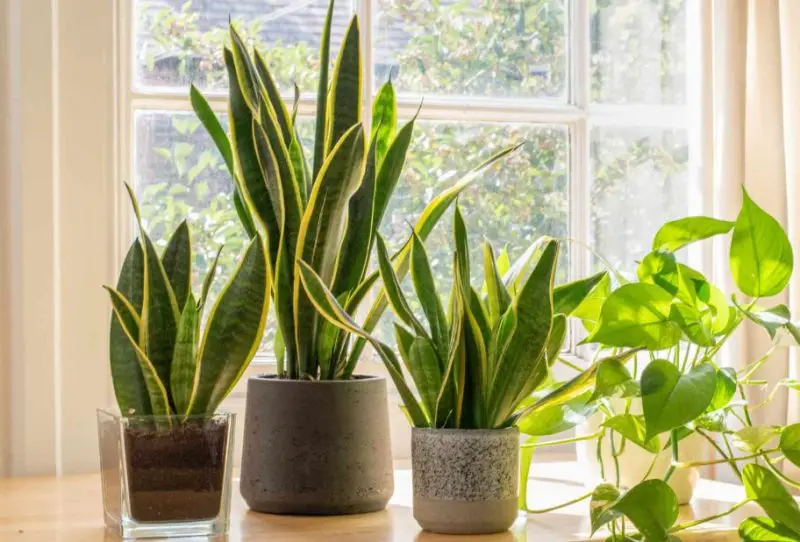
The snake plant, also known as mother-in-law’s tongue, is a striking houseplant with tall, upright leaves that are dark green with yellow or light green variegation. Its architectural appearance makes it a stylish addition to modern and minimalist spaces. It is also one of the toughest plants, tolerating neglect and various environmental conditions.
Snake plants require minimal care and thrive in low to bright, indirect light. They have low water needs and should only be watered when the soil is completely dry. Overwatering can cause root rot, so it’s best to use well-draining soil. They can tolerate drought, making them perfect for busy plant owners.
This plant is highly effective in filtering toxins like benzene, xylene, and formaldehyde from indoor air. Additionally, unlike most plants, it releases oxygen at night, making it an excellent choice for bedrooms to improve air quality while sleeping.
Peace Lily (Spathiphyllum spp.)
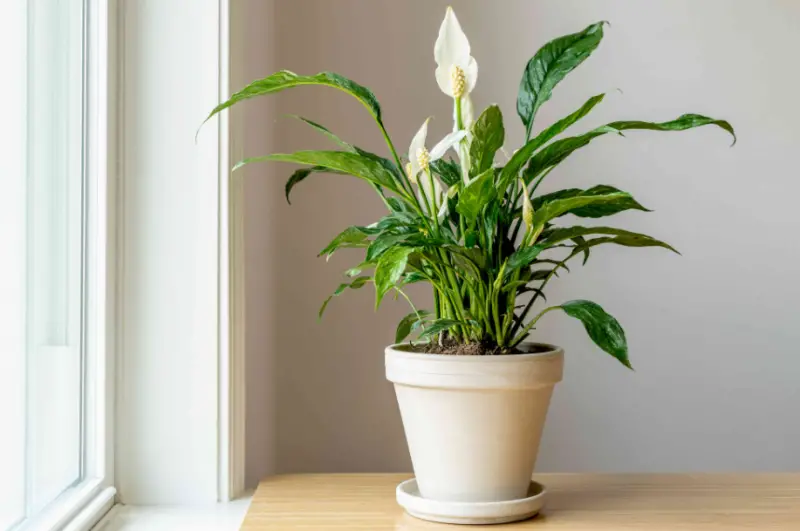
The peace lily is a graceful and elegant plant known for its glossy green leaves and white, hood-like flowers. It adds a touch of beauty to any indoor space and is easy to care for, making it a popular choice for both beginners and experienced plant lovers.
Peace lilies thrive in low to medium indirect light and prefer consistently moist soil. However, they don’t tolerate overwatering, so it’s important to let the top layer of soil dry before watering again. They also enjoy higher humidity, making them ideal for bathrooms or kitchens.
In addition to their aesthetic appeal, peace lilies are excellent air purifiers, removing harmful toxins like ammonia, benzene, and formaldehyde. They also help improve indoor humidity levels, reducing the risk of dry skin and respiratory issues.
Aloe Vera (Aloe barbadensis miller)
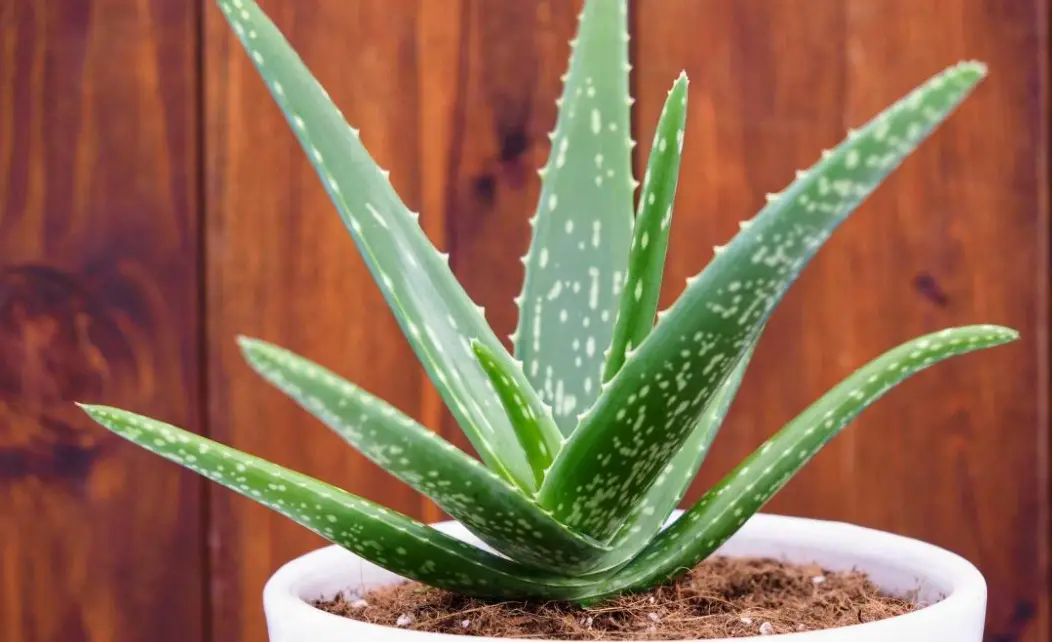
Aloe vera is a well-known succulent with thick, fleshy green leaves filled with a soothing gel. This plant is not only attractive but also has medicinal properties, commonly used for treating burns, cuts, and skin irritations. Its rosette-shaped growth makes it a compact and stylish addition to indoor spaces.
Caring for aloe vera is simple, as it thrives in bright, indirect sunlight and well-draining soil. Watering should be infrequent, allowing the soil to dry out completely between waterings to prevent root rot. It prefers warm temperatures and doesn’t tolerate frost, so it should be kept indoors in colder climates.
Beyond its healing properties, aloe vera also improves air quality by removing toxins like formaldehyde and benzene. Additionally, it releases oxygen at night, making it beneficial for bedrooms or workspaces where fresh air is needed.
Areca Palm (Dypsis lutescens)

The areca palm, also known as the butterfly palm, is a tropical plant with feathery, arching fronds that add a lush, elegant touch to indoor spaces. Its soft, flowing leaves create a soothing atmosphere, making it a favorite among interior decorators and plant enthusiasts alike.
This palm thrives in bright, indirect light but can tolerate some shade. It prefers consistently moist soil but should never be waterlogged. Regular misting helps maintain humidity, especially in dry indoor environments. Using well-draining soil and occasional fertilization keeps it healthy and vibrant.
Areca palms are excellent natural humidifiers, releasing moisture into the air and reducing dryness. They also filter out toxins like toluene and xylene, improving indoor air quality. Their air-purifying and humidity-boosting effects make them ideal for homes and offices.
Bamboo Palm (Chamaedorea seifrizii)
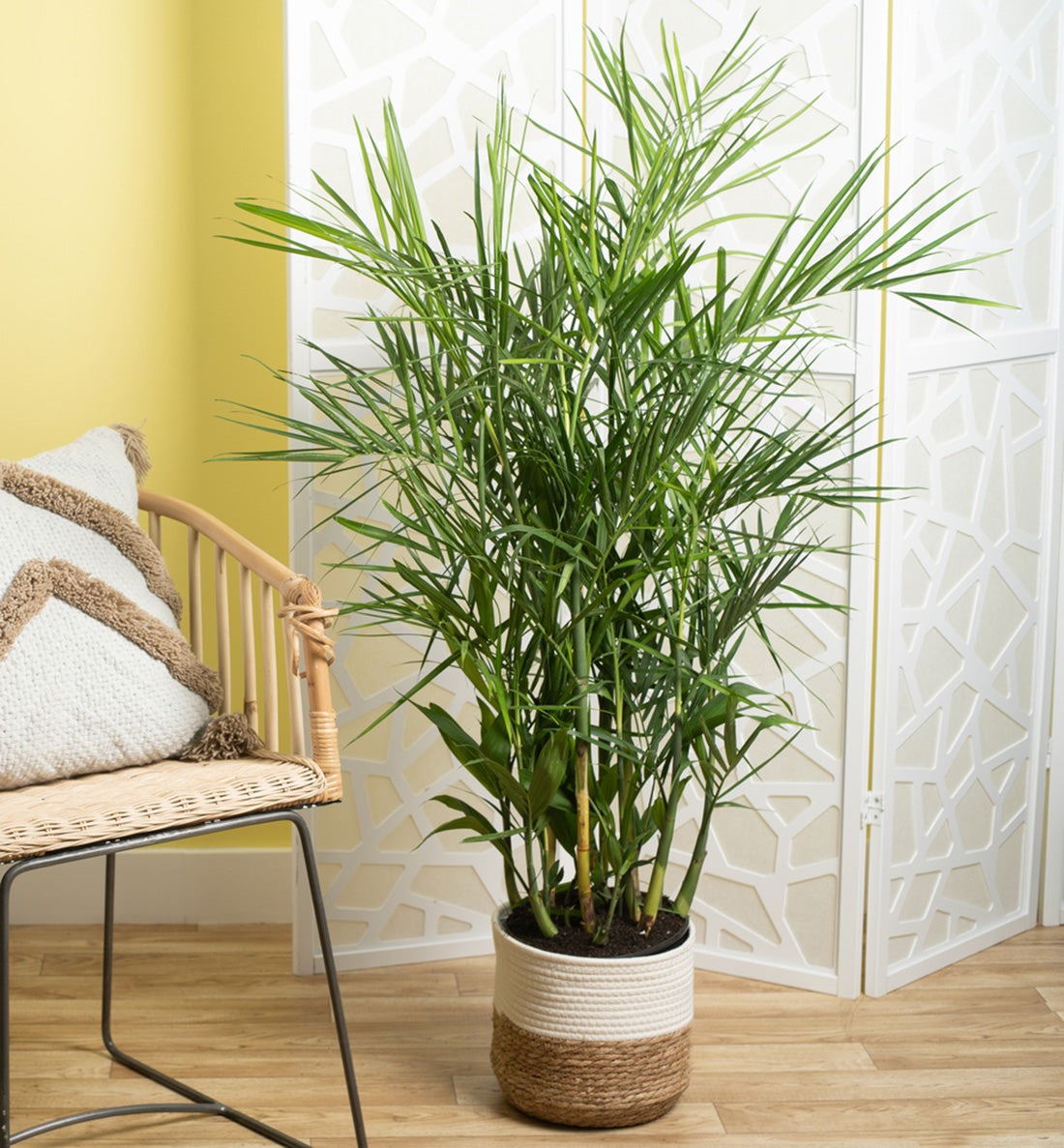
The bamboo palm is a beautiful, bushy plant with slender green stems and soft, arching fronds. It has a tropical feel, adding a refreshing and vibrant element to any indoor space. Unlike real bamboo, this palm is non-invasive and easy to maintain indoors.
Bamboo palms prefer bright, indirect light but can also adapt to lower-light conditions. They thrive in moist but well-draining soil and require regular watering, especially in drier climates. Occasional misting helps maintain humidity, and feeding it with a balanced fertilizer during the growing season encourages healthy growth.
This palm is known for its superior air-purifying capabilities, effectively removing pollutants like formaldehyde, carbon monoxide, and benzene. Additionally, its ability to increase humidity levels makes it an excellent plant for improving indoor air quality and overall well-being.
Boston Fern (Nephrolepis exaltata)
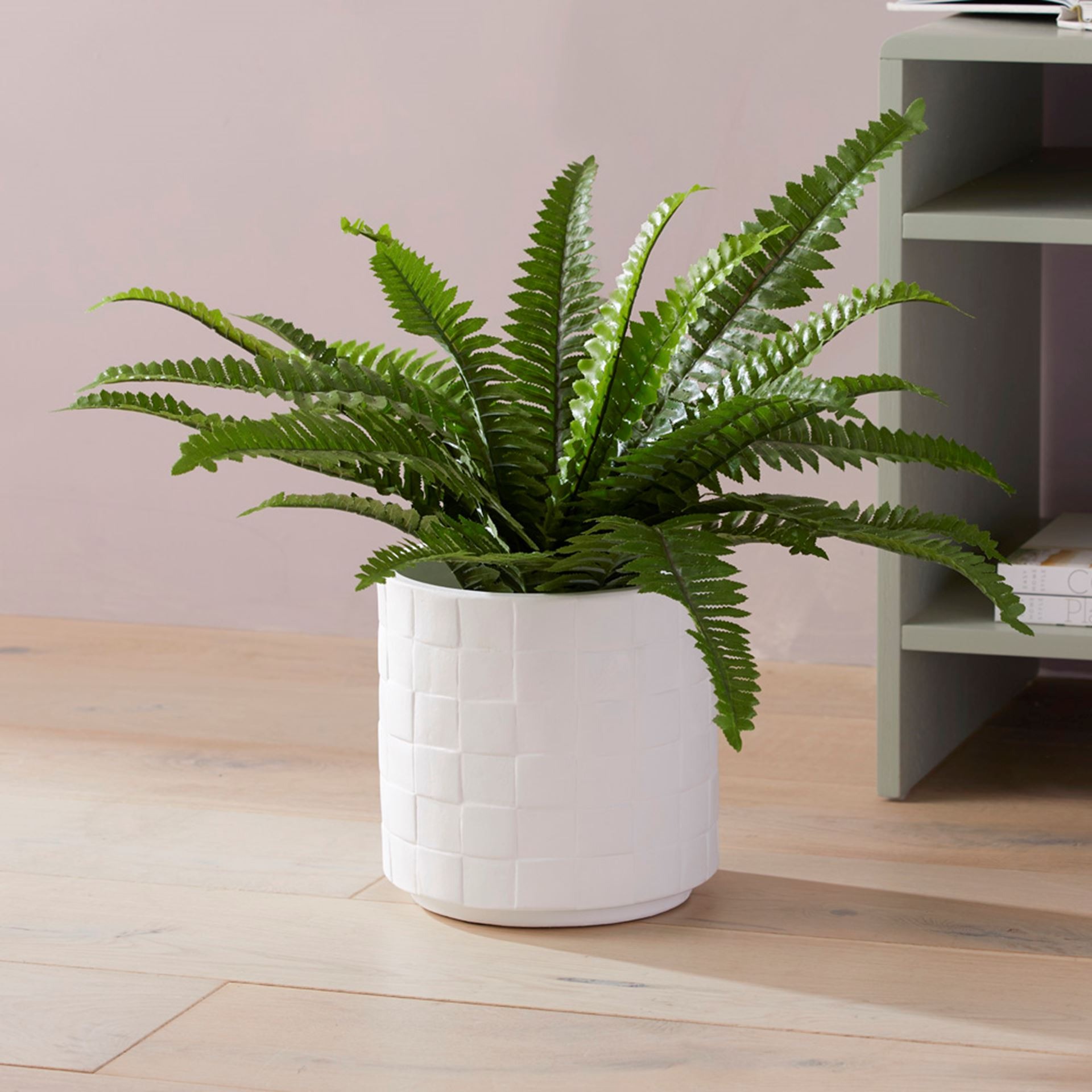
The Boston fern is a lush, feathery plant with arching fronds that create a delicate, cascading appearance. Its vibrant green foliage adds a refreshing touch to indoor spaces, making it a favorite for hanging baskets or pedestal planters. It thrives in humid conditions, making it well-suited for bathrooms or kitchens.
Caring for a Boston fern requires consistent moisture and high humidity. It prefers bright, indirect light but can tolerate some shade. Watering should be done regularly to keep the soil evenly moist but not soggy. Misting or placing it near a humidity tray helps prevent its fronds from drying out and turning brown.
Beyond its beauty, the Boston fern is an excellent air purifier, effectively removing formaldehyde and xylene from indoor air. Its ability to release moisture into the air makes it beneficial for improving humidity levels, helping to prevent dry skin and respiratory discomfort.
Rubber Plant (Ficus elastica)
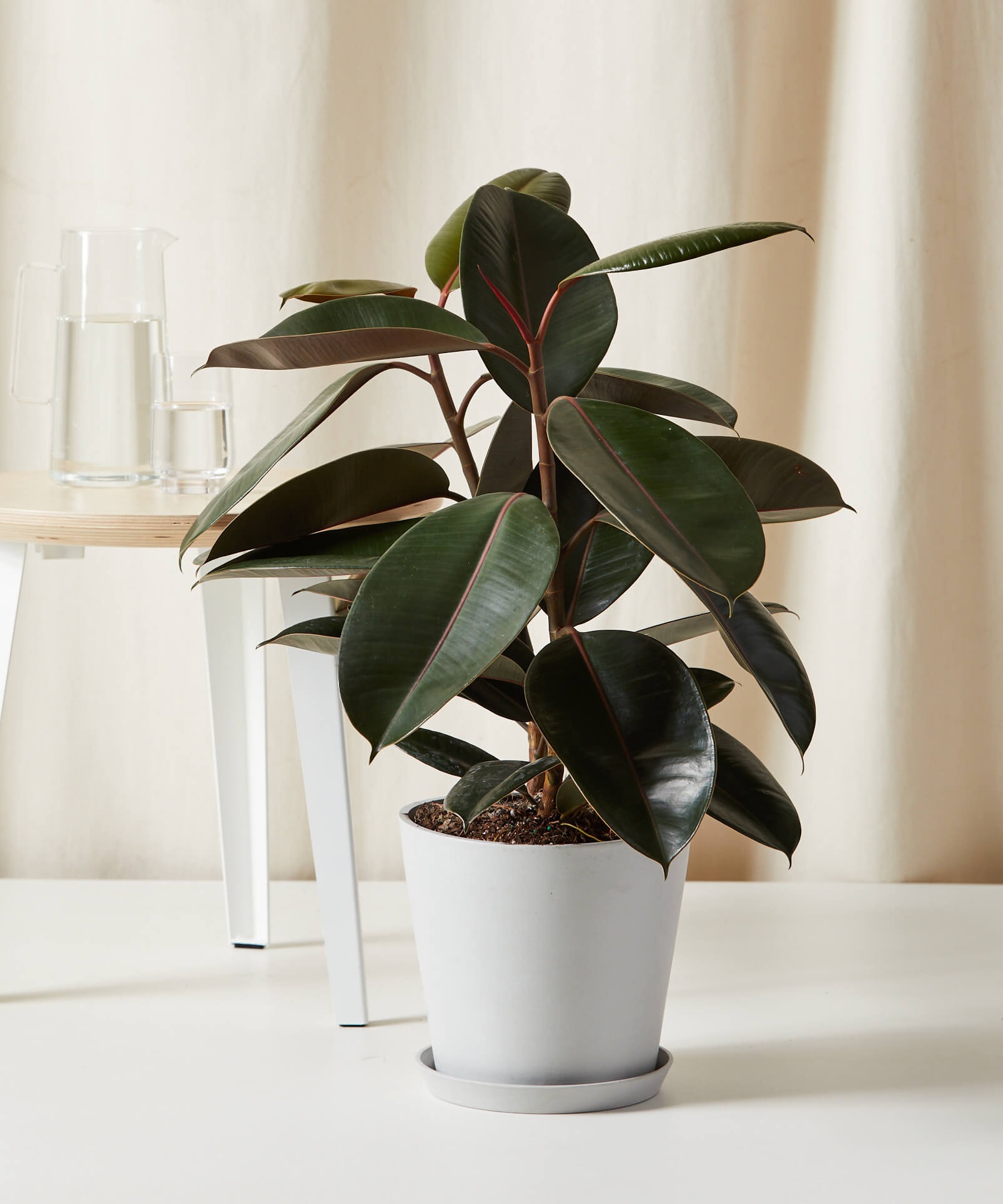
The rubber plant is a striking indoor tree with thick, glossy, dark green leaves that can sometimes have a burgundy hue. Its bold appearance makes it a standout houseplant, perfect for adding a touch of sophistication to modern interiors. It can grow quite tall if given enough space, making it a great statement plant.
This plant thrives in bright, indirect light but can adapt to lower light levels. It prefers well-draining soil and should be watered when the top layer of soil becomes dry. Overwatering can lead to root rot, so it’s important to let excess moisture drain out. Wiping its large leaves with a damp cloth helps keep them free from dust and enhances their ability to absorb toxins.
The rubber plant is known for its air-purifying abilities, particularly in removing formaldehyde and other pollutants from indoor air. Additionally, its broad leaves help improve oxygen levels, making indoor environments fresher and healthier.
Pothos (Epipremnum aureum)
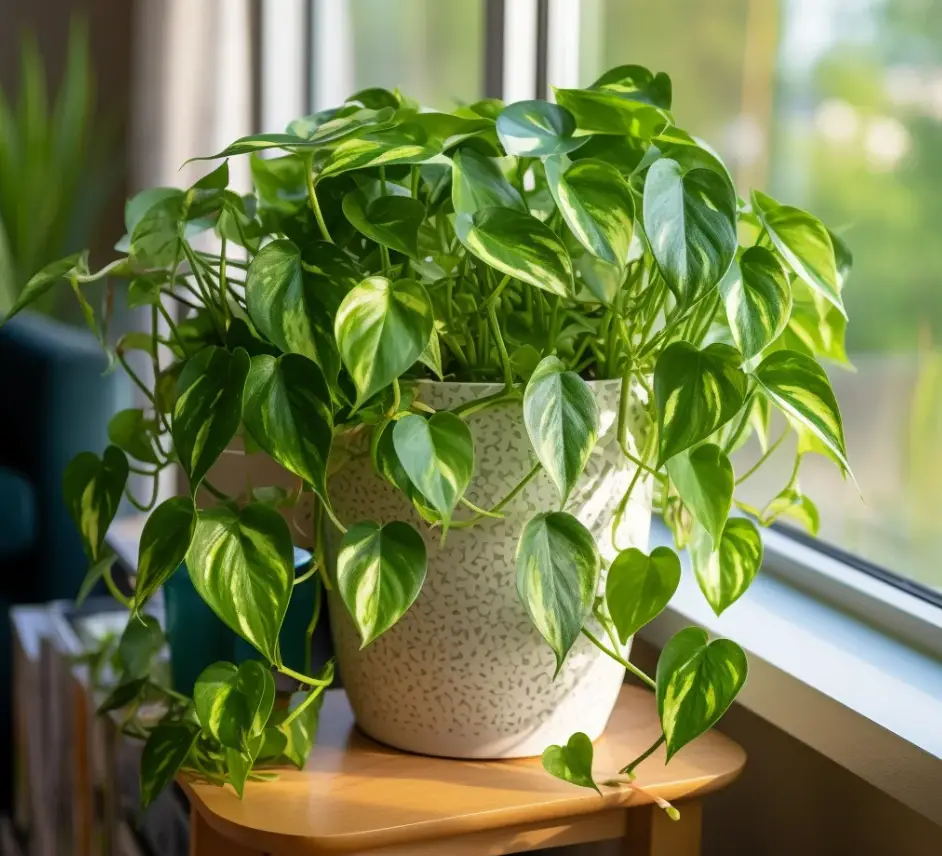
Pothos, also known as devil’s ivy, is a popular trailing houseplant with heart-shaped leaves that come in various shades of green, yellow, and white variegation. It is highly adaptable and can be grown in hanging baskets, climbing on supports, or cascading from shelves.
This plant is one of the easiest to care for, thriving in low to bright, indirect light. It tolerates occasional neglect and irregular watering, making it perfect for beginners. Pothos prefers well-draining soil and should be watered when the soil is dry to the touch. Pruning encourages bushier growth and prevents legginess.
Pothos is a powerful air purifier, known for filtering out toxins like benzene, formaldehyde, and xylene. Its ability to thrive in low-light conditions makes it an excellent choice for improving air quality in offices, bedrooms, and other indoor spaces.
Philodendron (Philodendron spp.)
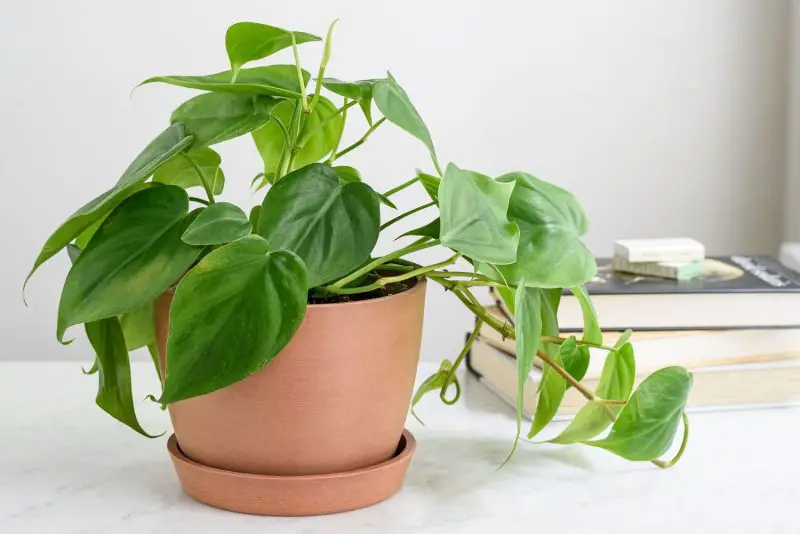
Philodendrons are tropical houseplants known for their lush, heart-shaped or split leaves, depending on the variety. They come in both vining and upright forms, making them versatile for different indoor settings. Their vibrant foliage adds a natural, lively touch to any space.
These plants thrive in medium to bright, indirect light but can tolerate lower light conditions. They prefer slightly moist soil but should not be overwatered. Regular pruning helps maintain their shape and encourages fuller growth. Some varieties, like the climbing types, benefit from support structures like moss poles.
Philodendrons are excellent air purifiers, removing pollutants like formaldehyde from indoor air. They also contribute to overall well-being by enhancing oxygen levels and adding a calming, tropical aesthetic to living spaces.
Dracaena (Dracaena spp.)
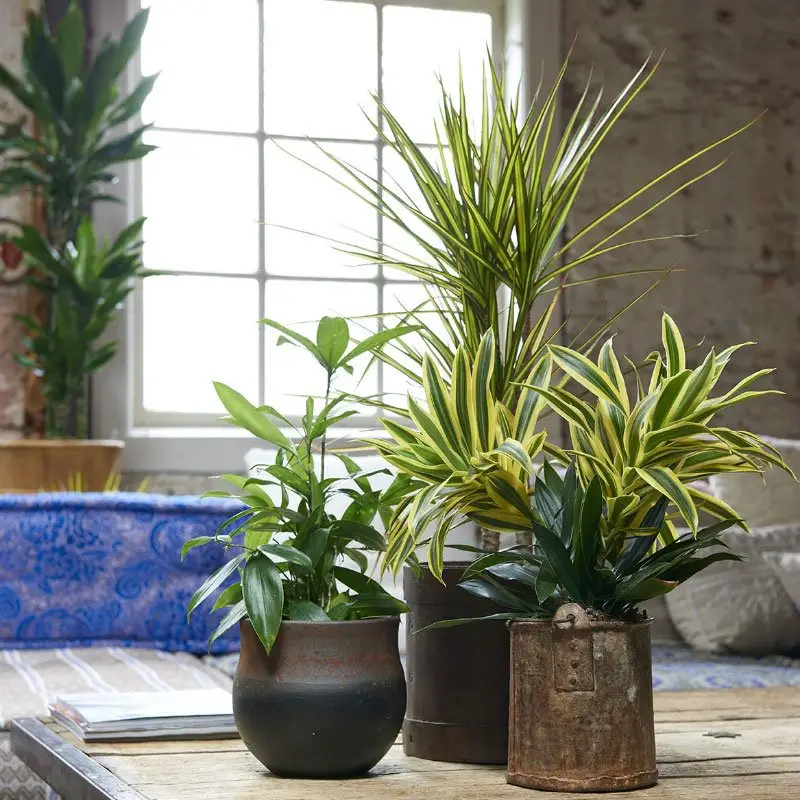
Dracaena plants are a diverse group of houseplants known for their long, sword-like leaves with striking variegation. Some popular varieties include Dracaena marginata (Dragon Tree), Dracaena fragrans (Corn Plant), and Dracaena reflexa (Song of India). Their upright growth makes them excellent floor plants for home or office settings.
Dracaena plants prefer bright, indirect light but can tolerate lower light conditions. They require well-draining soil and should be watered when the top inch of soil dries out. Overwatering should be avoided, as it can lead to root rot. Occasional misting or wiping the leaves helps keep them clean and healthy.
These plants are highly effective at removing toxins like formaldehyde, benzene, and trichloroethylene from indoor air. Their striking appearance and low-maintenance nature make them a great choice for improving both air quality and interior aesthetics.
Chinese Evergreen (Aglaonema spp.)
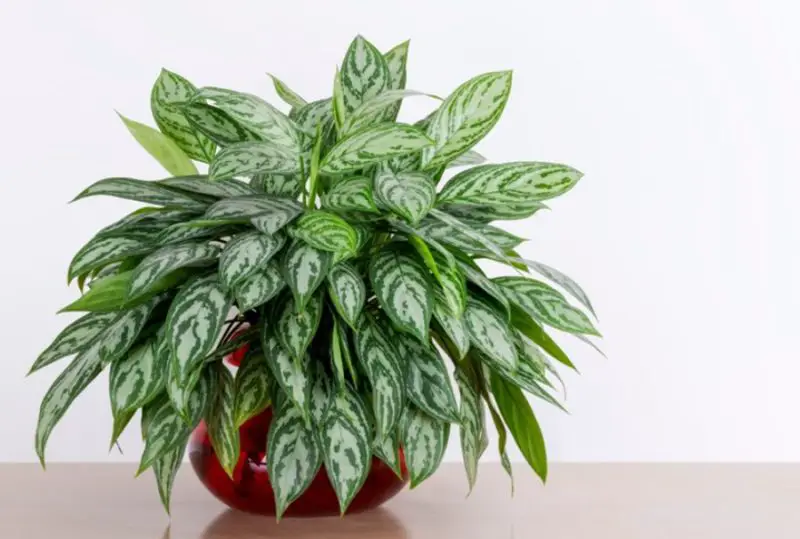
The Chinese evergreen is a hardy, low-maintenance houseplant with attractive, patterned leaves in shades of green, silver, red, and pink. Its compact growth and tolerance for various conditions make it a great addition to homes and offices.
This plant thrives in low to medium, indirect light and prefers well-draining soil. It requires moderate watering, allowing the top inch of soil to dry out between waterings. Chinese evergreens enjoy warm temperatures and moderate humidity, making them well-suited for indoor environments.
Beyond its aesthetic appeal, the Chinese evergreen is a powerful air-purifying plant, capable of removing toxins like benzene and formaldehyde from indoor spaces. Its ability to thrive in low-light conditions makes it an excellent choice for improving air quality in dimly lit rooms.
ZZ Plant (Zamioculcas zamiifolia)
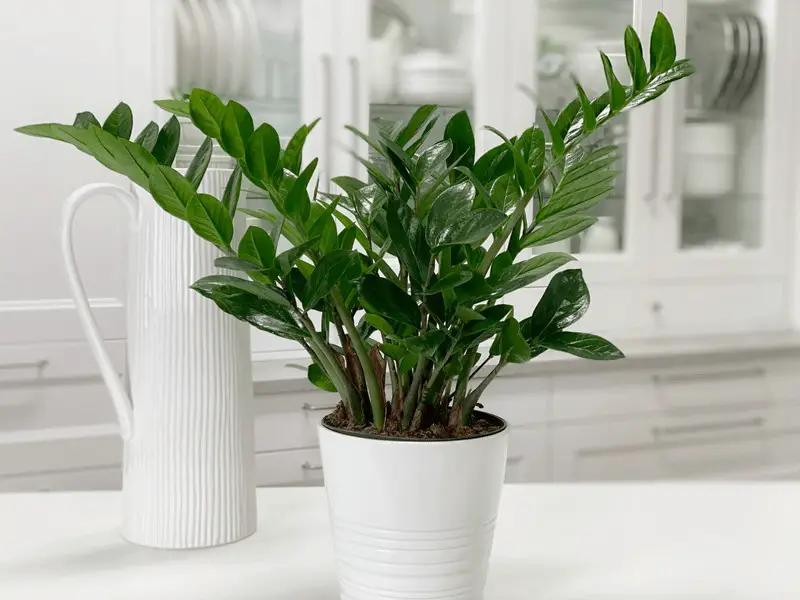
The ZZ plant is a tough and attractive houseplant known for its glossy, dark green leaves that grow in a symmetrical pattern. It is highly resilient and can tolerate neglect, making it a popular choice for busy plant owners or low-maintenance indoor spaces. Its sleek, waxy foliage adds a modern touch to home or office decor.
This plant thrives in low to bright, indirect light and requires minimal watering. It prefers well-draining soil and should only be watered when the soil is completely dry. Overwatering can lead to root rot, so it’s best to err on the side of underwatering. ZZ plants are also resistant to pests and diseases, making them even easier to care for.
Aside from being nearly indestructible, the ZZ plant is an excellent air purifier, removing toxins such as benzene, toluene, and xylene from the air. Its ability to improve indoor air quality and thrive in various conditions makes it a valuable addition to any indoor environment.
Golden Cane Palm (Dypsis lutescens)
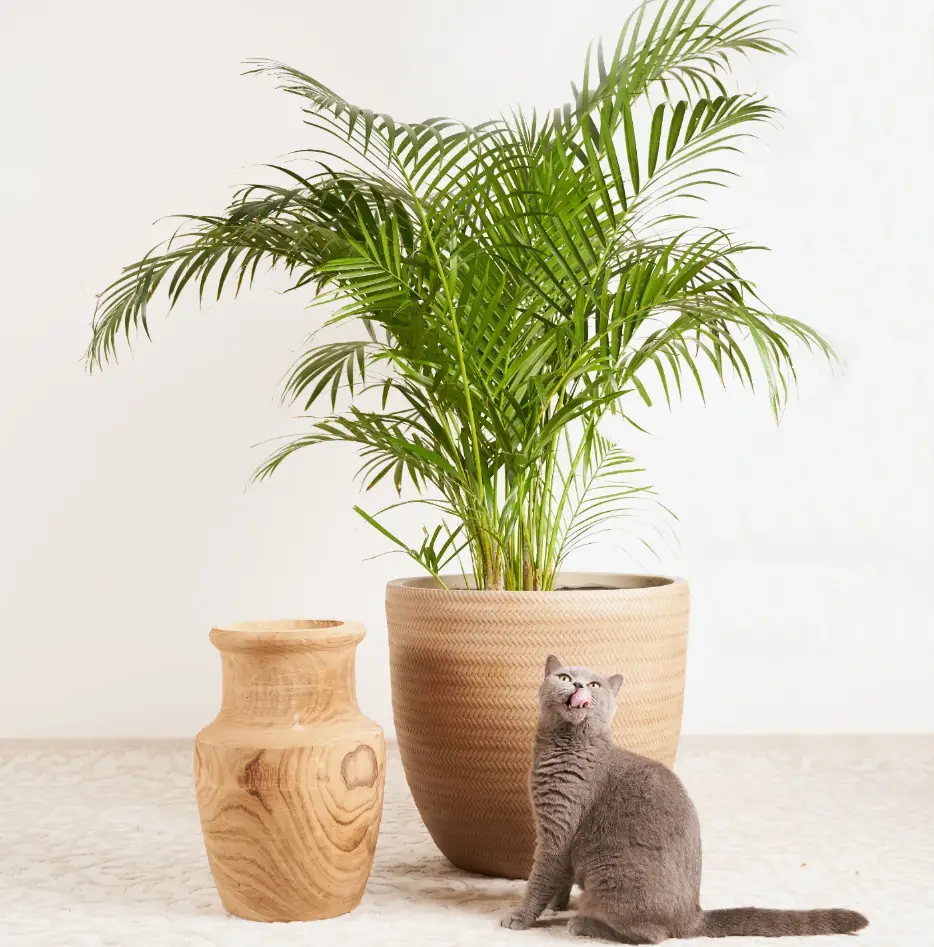
The golden cane palm, also known as the areca palm or butterfly palm, is a tropical beauty with feathery, arching fronds and a graceful appearance. Its yellow-green stems resemble bamboo, adding a bright and elegant touch to indoor spaces. It grows in a clumping manner, making it a lush and full houseplant.
This palm thrives in bright, indirect light but can tolerate some shade. It prefers consistently moist soil but should not be waterlogged. Regular misting or a humidity tray helps maintain the moisture levels it enjoys. Using well-draining soil and providing occasional fertilization ensures healthy, vibrant growth.
Golden cane palms are excellent natural air humidifiers and effective at filtering airborne toxins like formaldehyde and carbon monoxide. Their ability to enhance air quality while bringing a tropical feel indoors makes them a perfect choice for homes and offices.
Lady Palm (Rhapis excelsa)
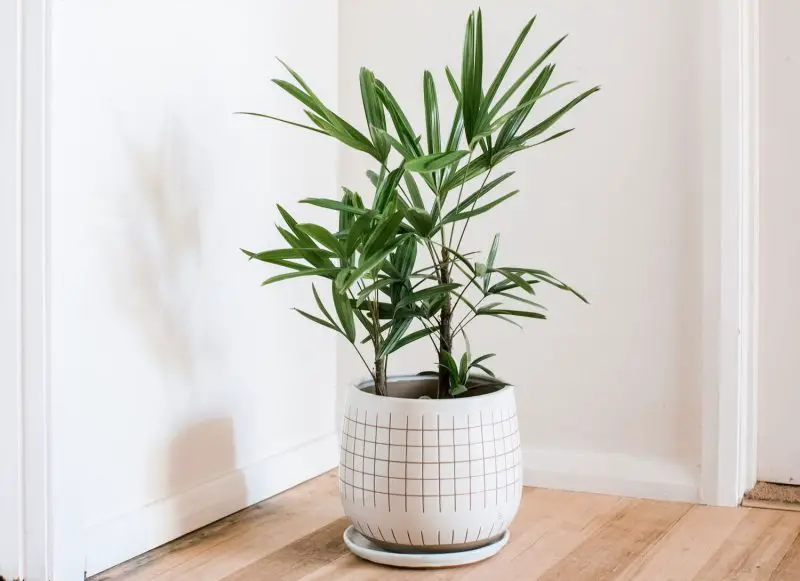
The lady palm is a refined and slow-growing houseplant with deep green, fan-like leaves that create a dense and elegant appearance. It is a highly adaptable and durable palm species that can thrive indoors for many years with proper care. Its upright growth and rich foliage make it a sophisticated addition to any space.
Lady palms prefer bright, indirect light but can tolerate lower light conditions. They grow best in well-draining soil and require regular but moderate watering. They thrive in humid environments, so occasional misting can help keep them healthy. Unlike some palms, they are relatively easy to maintain and resistant to common pests.
One of the best features of the lady palm is its ability to purify indoor air by removing toxins such as ammonia, formaldehyde, and benzene. Additionally, its dense foliage can help reduce indoor noise levels, making it an excellent plant for both aesthetic and practical purposes.
Dwarf Date Palm (Phoenix roebelenii)

The dwarf date palm is a small, elegant palm tree with arching fronds and a single slender trunk. It has a tropical and exotic look, making it a great indoor plant for those who want a miniature version of a traditional palm tree. Its fine, feathery leaves give it a soft and graceful appearance.
This palm thrives in bright, indirect light but can adapt to moderate light conditions. It requires well-draining soil and regular watering, allowing the topsoil to dry out between waterings. High humidity levels are beneficial, so occasional misting or a humidity tray can help keep the leaves vibrant and healthy.
Besides its decorative appeal, the dwarf date palm is an excellent air-purifying plant, helping to remove toxins such as formaldehyde and xylene. Its ability to improve air quality while adding a tropical charm to interiors makes it a popular choice for homes and offices.
Weeping Fig (Ficus benjamina)
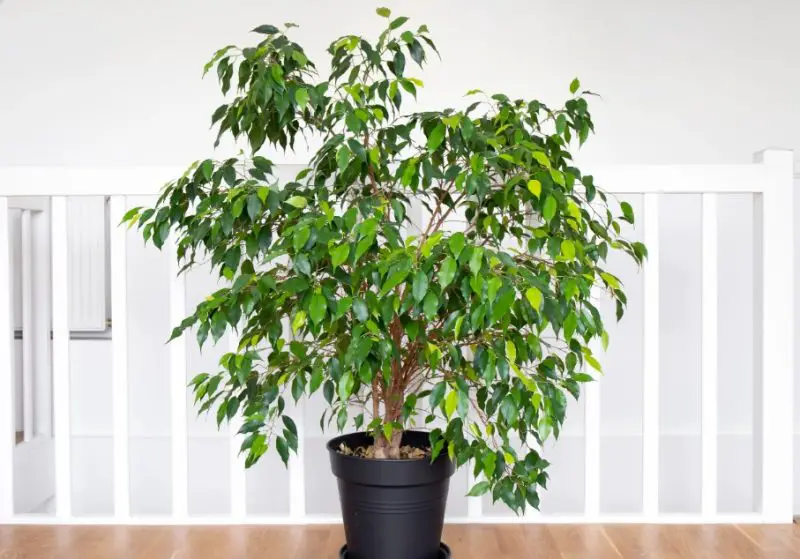
The weeping fig is a graceful, tree-like houseplant with slender branches and glossy green leaves that gently droop, giving it an elegant and cascading appearance. It is a classic indoor plant that can grow into an attractive small tree with proper care.
This plant thrives in bright, indirect light but can adapt to lower light conditions. It prefers consistently moist but well-draining soil. Sudden changes in environment, such as moving it or exposing it to drafts, can cause leaf drop, so it’s best to keep it in a stable location. Occasional pruning helps maintain its shape and encourages bushier growth.
The weeping fig is known for its strong air-purifying abilities, removing pollutants such as formaldehyde, benzene, and trichloroethylene from indoor spaces. Its ability to improve air quality while serving as an elegant indoor tree makes it a great addition to living rooms, offices, and other indoor settings.
Chrysanthemum (Chrysanthemum morifolium)
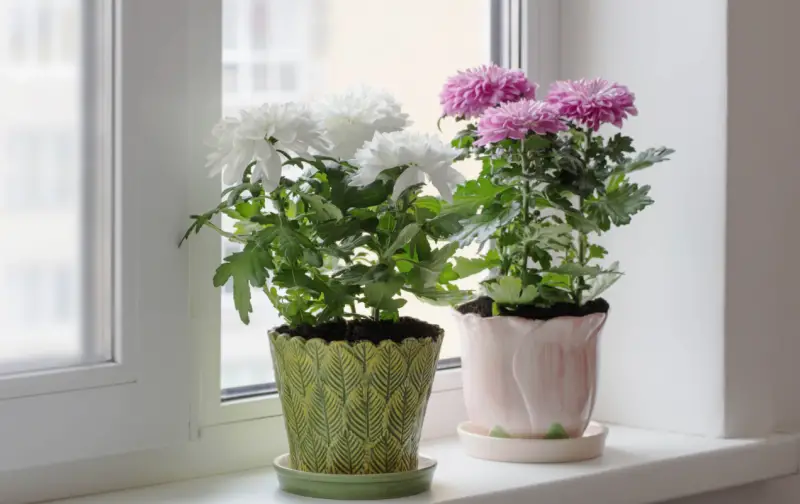
Chrysanthemums, or mums, are popular flowering houseplants known for their vibrant blooms in shades of yellow, pink, red, and white. They are often used as decorative plants, adding a splash of color to indoor spaces. While they are commonly associated with outdoor gardens, they can also be grown indoors under the right conditions.
Mums require bright, indirect light to encourage blooming and well-draining soil that is kept consistently moist but not soggy. They prefer cooler temperatures and good air circulation. Once the blooms fade, they can be planted outdoors or replaced with new plants, as they are often grown as temporary houseplants.
In addition to their beauty, chrysanthemums are one of the most effective air-purifying plants, removing toxins like ammonia, benzene, and formaldehyde from indoor air. Their ability to filter harmful chemicals while providing stunning flowers makes them a dual-purpose plant for both aesthetics and air quality.
Gerbera Daisy (Gerbera jamesonii)
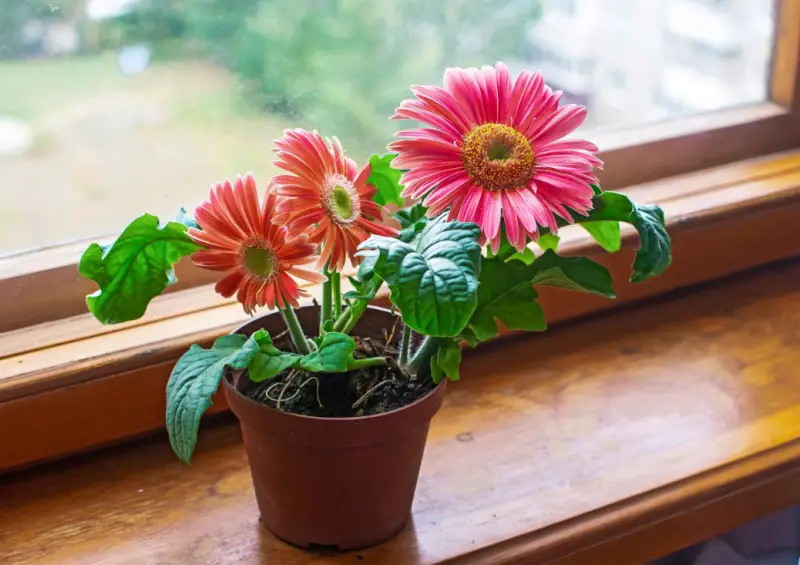
The Gerbera daisy is a bright and cheerful flowering plant known for its large, colorful blooms that come in shades of red, pink, orange, yellow, and white. Its vibrant flowers and dark green foliage make it a popular choice for adding a lively touch to indoor spaces.
To thrive indoors, Gerbera daisies need bright, indirect sunlight and well-draining soil. They should be watered regularly, allowing the soil to dry slightly between waterings to prevent root rot. Cooler temperatures and good air circulation help extend the blooming period. Deadheading spent flowers encourages new blooms.
Gerbera daisies are not just decorative—they are also powerful air purifiers. They are known to remove toxins like benzene and formaldehyde from indoor air while also increasing oxygen levels. Their bright blooms can enhance mood and bring a fresh, energetic feel to any room.
Flamingo Lily (Anthurium andraeanum)
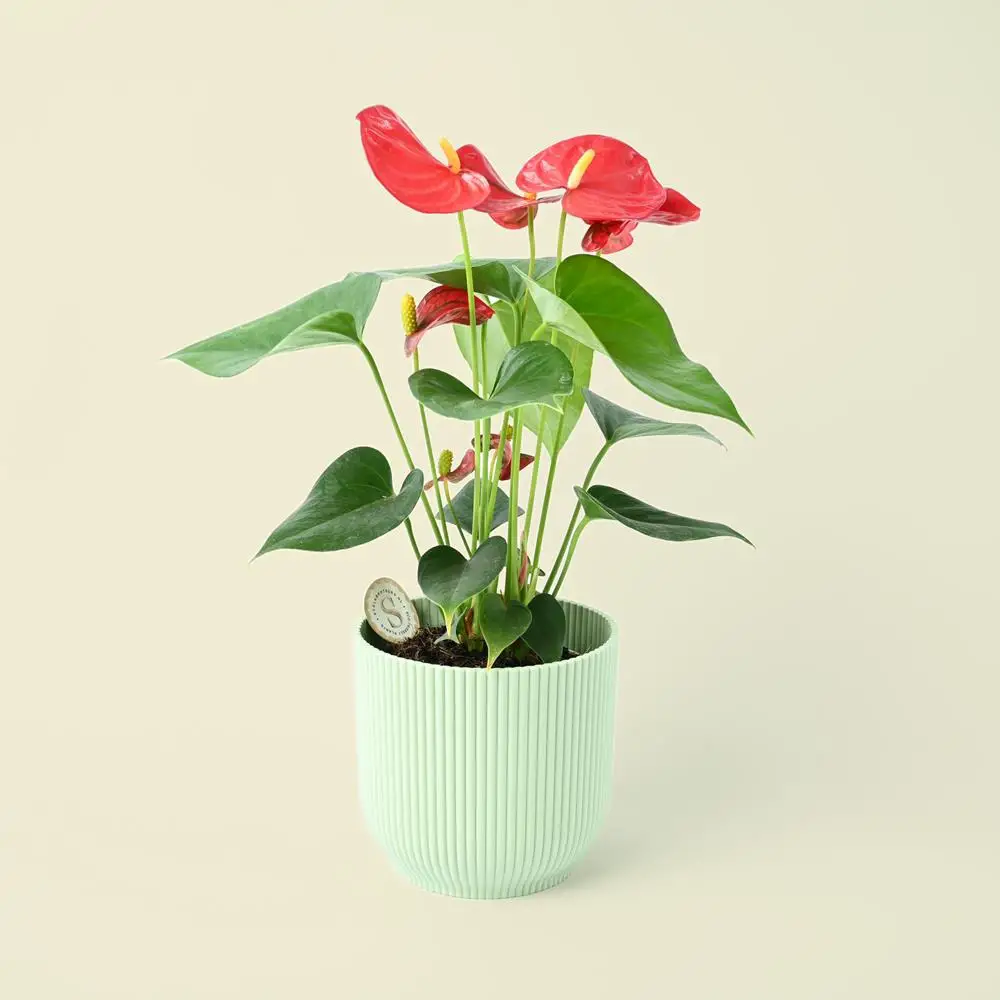
Flamingo lily, or anthurium, is a striking houseplant with glossy, heart-shaped leaves and waxy, vibrant red or pink spathes surrounding a yellow or white spadix. Its exotic appearance adds a touch of tropical elegance to indoor spaces.
This plant thrives in bright, indirect light but can adapt to lower light conditions. It prefers consistently moist, well-draining soil and high humidity. Regular misting or placing it near a humidity tray helps maintain its glossy foliage. Overwatering should be avoided, as it can lead to root rot.
Flamingo lily is an excellent air-purifying plant, removing toxins like ammonia, formaldehyde, and xylene from the air. It also adds humidity to indoor environments, making it beneficial for respiratory health. Its long-lasting, vibrant flowers bring a pop of color and sophistication to any home or office.
Heartleaf Philodendron (Philodendron hederaceum)
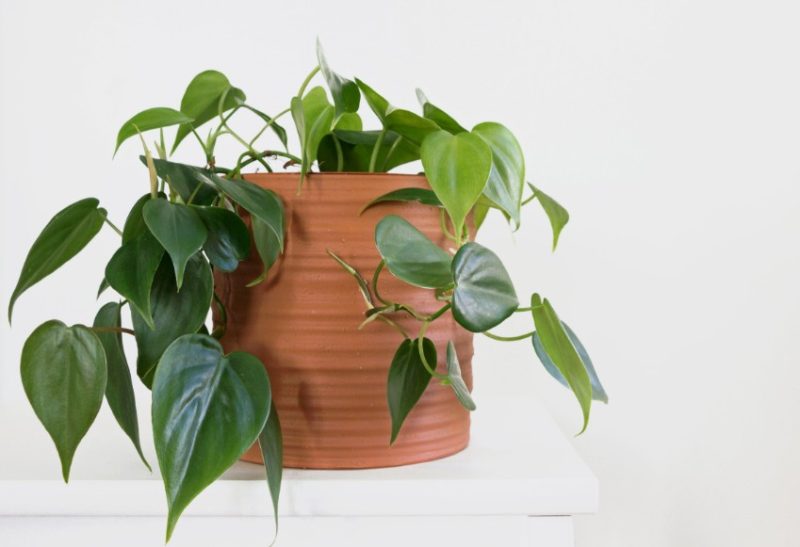
The heartleaf philodendron is a popular trailing houseplant with small, heart-shaped, glossy green leaves. It is an easy-to-care-for plant that can grow in hanging baskets, climb up trellises, or trail down from shelves, making it highly versatile for indoor decoration.
This plant thrives in low to bright, indirect light and prefers well-draining soil. It should be watered when the top inch of soil is dry. Heartleaf philodendrons are fast growers and can benefit from occasional pruning to maintain a full and bushy shape. They are also highly adaptable and can tolerate some neglect.
Beyond its beauty, the heartleaf philodendron is a natural air purifier, effectively removing toxins such as formaldehyde and carbon monoxide. Its ability to thrive in various conditions while improving indoor air quality makes it a favorite among houseplant enthusiasts.
English Ivy (Hedera helix)
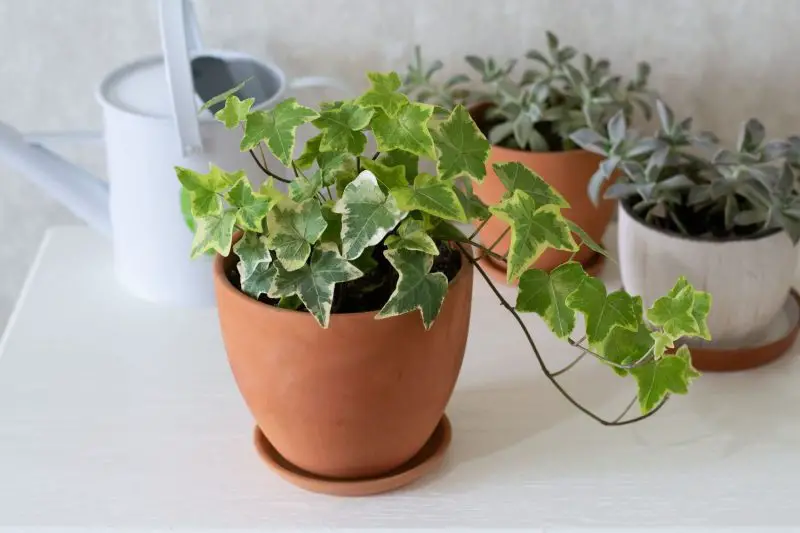
English ivy is a classic, trailing houseplant with small, lobed leaves that create a dense, cascading appearance. It is highly adaptable and can be grown in hanging baskets, as a climbing vine, or even as a ground cover for potted arrangements.
This plant prefers bright, indirect light but can tolerate lower light conditions. It thrives in well-draining soil and should be watered when the top layer becomes dry. High humidity helps prevent common issues like spider mites, so misting or placing it near a humidity tray is beneficial.
English ivy is one of the best air-purifying plants, known for removing pollutants such as formaldehyde, benzene, and mold spores from indoor air. It is also effective in reducing airborne particles, making it a great choice for improving respiratory health in enclosed spaces.
Corn Plant (Dracaena fragrans)
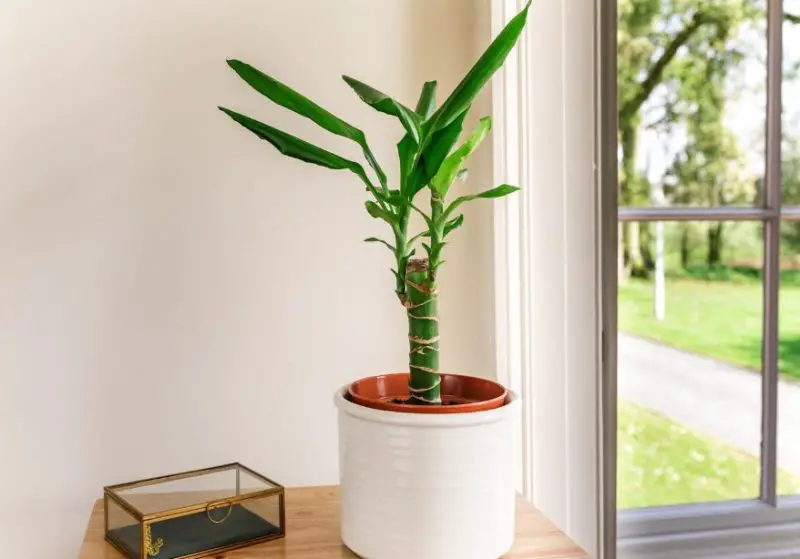
The corn plant is a tall, slow-growing houseplant with long, arching green leaves that have yellow or cream-colored stripes. Its cane-like trunk and lush foliage make it a stylish addition to any indoor space, giving a tropical feel without requiring extensive care.
This plant thrives in medium to bright, indirect light but can tolerate low-light conditions. It prefers well-draining soil and moderate watering, allowing the top inch of soil to dry out before rewatering. It is sensitive to fluoride in tap water, so using filtered or distilled water is recommended.
Corn plants are excellent air purifiers, effectively removing toxins like formaldehyde, benzene, and trichloroethylene. They also help increase indoor humidity, improving air quality and reducing dryness-related discomfort. Their easy care and elegant look make them a great choice for homes and offices.
Cast Iron Plant (Aspidistra elatior)
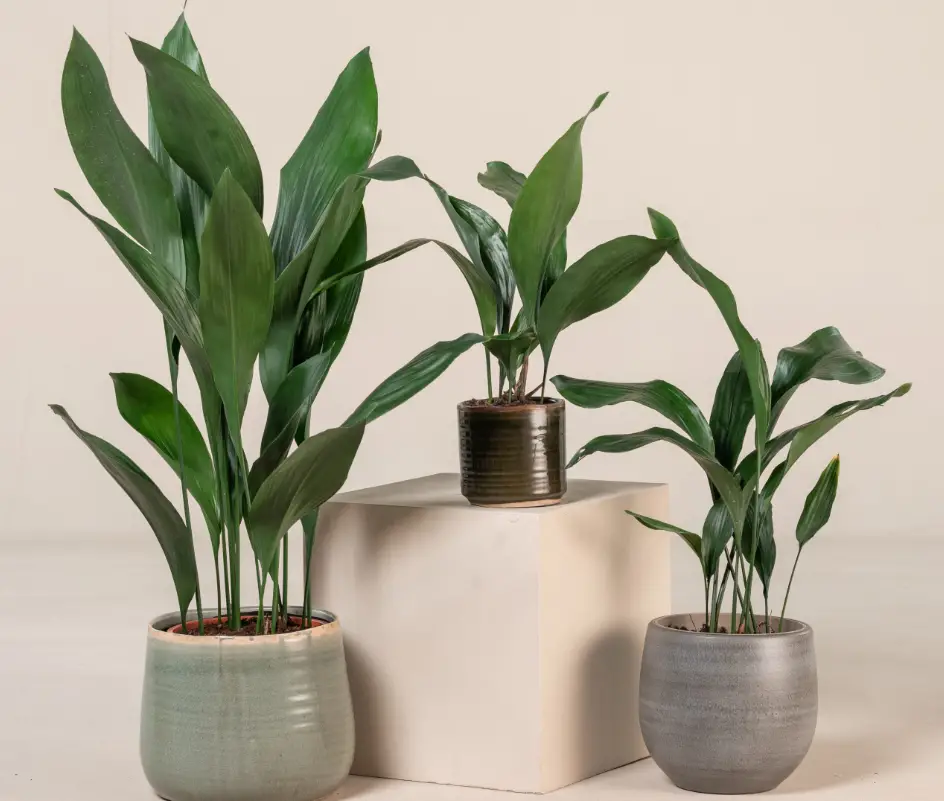
The cast iron plant is one of the toughest houseplants, known for its dark green, lance-shaped leaves and incredible resilience. It can withstand neglect, low light, and varying temperatures, making it a perfect plant for beginners or those with less-than-ideal indoor conditions.
This plant thrives in low to moderate, indirect light and prefers well-draining soil. It is highly drought-tolerant and only needs occasional watering when the soil is dry. It is also resistant to pests and diseases, further adding to its reputation as a nearly indestructible plant.
In addition to being extremely low-maintenance, the cast iron plant helps improve indoor air quality by filtering out toxins like formaldehyde and benzene. Its ability to thrive in challenging conditions while purifying the air makes it an excellent choice for homes and offices.
Prayer Plant (Maranta leuconeura)
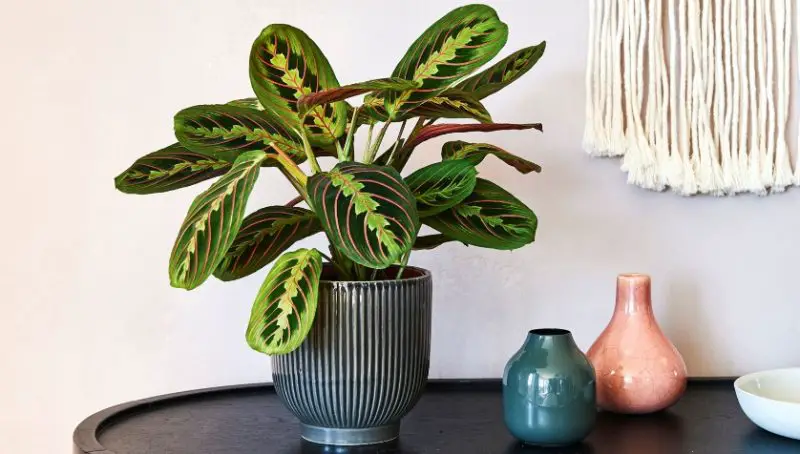
The prayer plant is a stunning houseplant known for its oval, patterned leaves that fold up at night, resembling hands in prayer. Its vibrant foliage, often marked with shades of green, red, and purple, makes it a popular decorative plant.
This plant thrives in bright, indirect light and requires consistently moist, well-draining soil. High humidity is essential for keeping its foliage lush, so regular misting or placing it near a humidity tray is beneficial. Avoid letting the soil dry out completely, as this can cause the leaves to curl.
Aside from its striking beauty, the prayer plant helps purify indoor air by removing toxins and improving humidity levels. Its calming presence and movement throughout the day make it an intriguing and dynamic addition to any home.
Lemon Balm (Melissa officinalis)
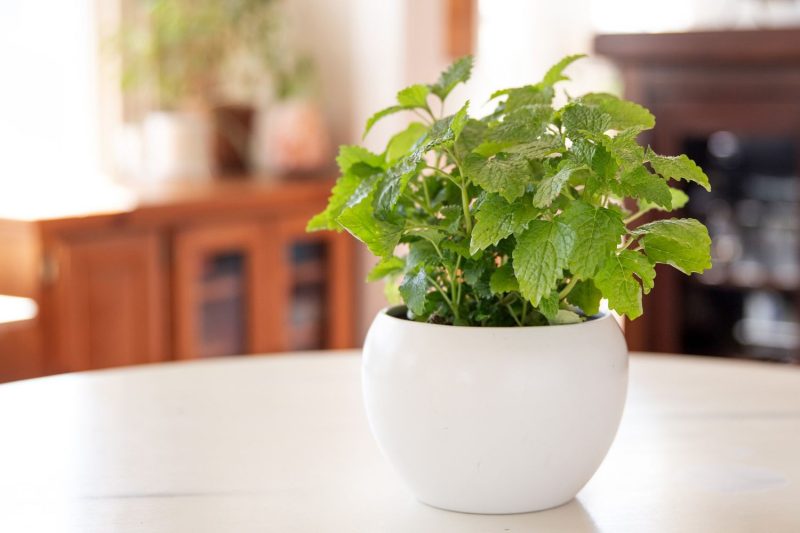
Lemon balm is a fragrant herb with bright green, slightly crinkled leaves that release a refreshing lemon scent when touched. It is commonly used in teas, aromatherapy, and cooking due to its soothing and uplifting properties.
This herb prefers bright, indirect light but can tolerate some direct sun. It grows best in well-draining soil and requires regular watering to keep the soil evenly moist. Pruning the plant encourages bushy growth and prevents it from becoming too leggy indoors.
Lemon balm is known for its air-purifying properties and ability to reduce stress and anxiety through its natural scent. Its antibacterial and antiviral properties also contribute to a cleaner indoor environment, making it both a practical and pleasant houseplant.
Lavender (Lavandula spp.)
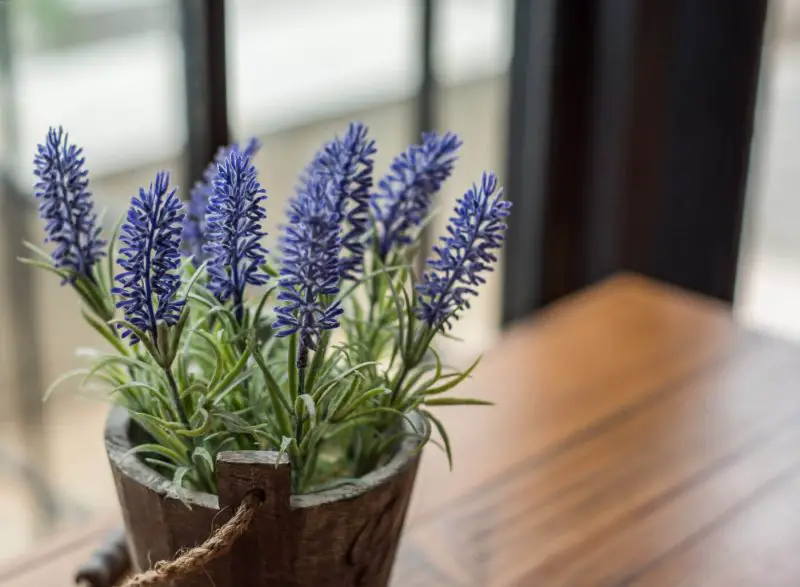
Lavender is a beloved herb known for its silvery-green leaves and fragrant purple flowers. Its calming scent is widely used in essential oils, aromatherapy, and sleep aids. Growing lavender indoors adds a refreshing and serene touch to any space.
This plant thrives in bright, direct sunlight and requires well-draining, sandy soil. It is drought-tolerant and should be watered only when the soil is dry to the touch. Good air circulation is important to prevent mold and mildew from forming on the leaves.
Lavender is an excellent air purifier, known for reducing airborne bacteria and enhancing relaxation. Its soothing aroma can help improve sleep quality and reduce stress, making it a wonderful addition to bedrooms and workspaces.
Eucalyptus (Eucalyptus spp.)
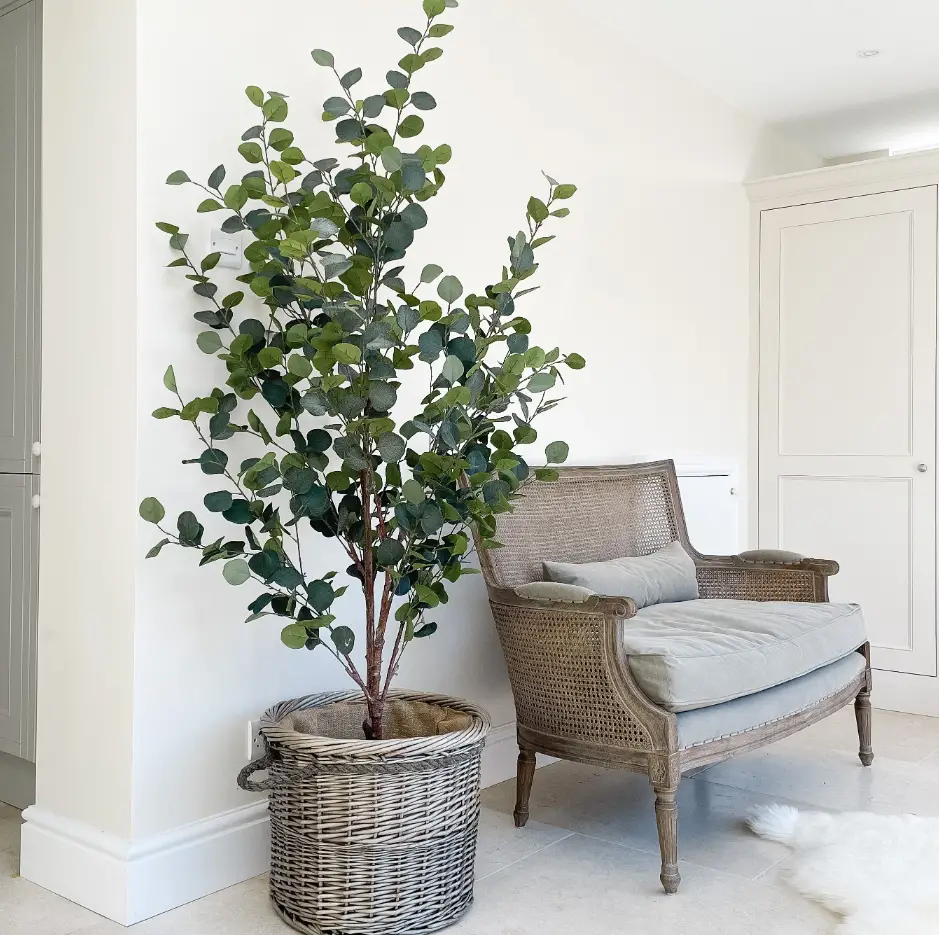
Eucalyptus is a striking houseplant with round, silvery-blue leaves that emit a refreshing, menthol-like fragrance. It is widely used for its essential oils and medicinal properties, making it a functional and decorative plant.
This plant needs bright, direct sunlight to thrive and grows best in well-draining soil. It requires moderate watering, allowing the soil to dry out slightly between waterings. Eucalyptus can grow rapidly indoors, so regular pruning helps maintain its size and shape.
Eucalyptus is highly effective at purifying the air by removing airborne toxins and acting as a natural decongestant. Its fresh scent can help improve respiratory health and create a spa-like atmosphere in the home.
Mint (Mentha spp.)
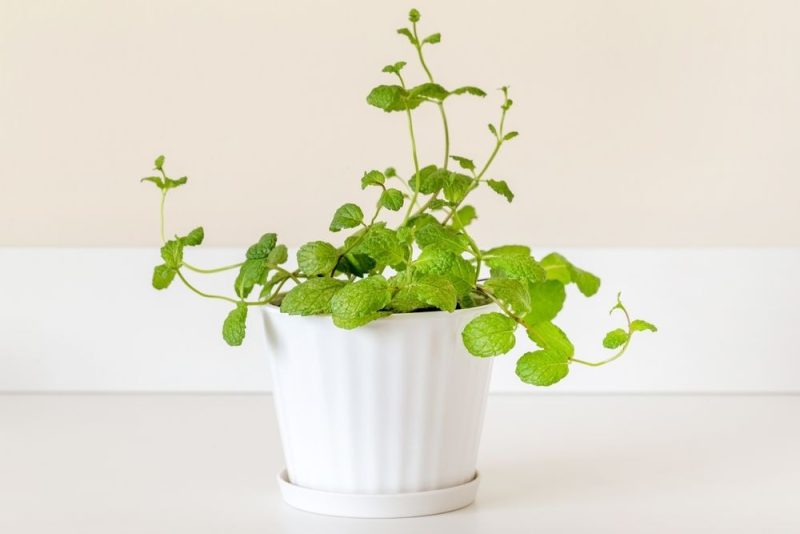
Mint is a fast-growing herb with bright green, aromatic leaves that are widely used in cooking, teas, and natural remedies. It spreads quickly and can be grown indoors to provide a continuous supply of fresh leaves.
This herb thrives in bright, indirect light but can adapt to lower light conditions. It requires consistently moist soil and regular trimming to prevent it from becoming too leggy. Growing mint in a separate pot is recommended, as it can spread aggressively.
Mint not only purifies the air but also helps repel pests like mosquitoes and ants. Its refreshing scent promotes mental clarity and relaxation, making it a useful and multifunctional indoor plant.
Rosemary (Salvia rosmarinus)
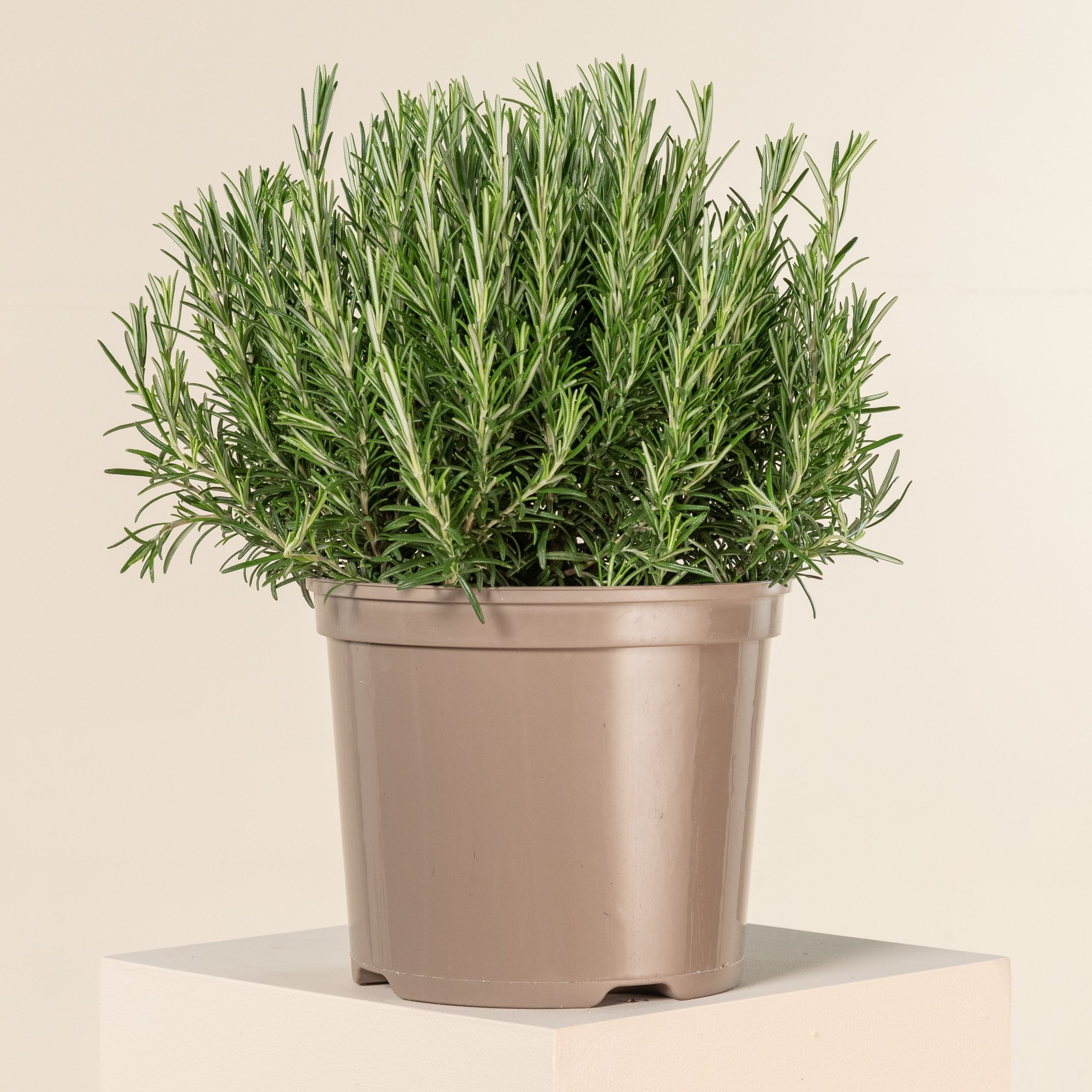
Rosemary is a woody, fragrant herb with needle-like leaves and a strong, earthy scent. It is commonly used for cooking, herbal medicine, and aromatherapy. Its evergreen foliage adds a touch of Mediterranean charm to indoor spaces.
This plant requires bright, direct sunlight for at least six hours a day and grows best in well-draining, sandy soil. It should be watered moderately, allowing the top inch of soil to dry between waterings. Proper air circulation is essential to prevent mildew.
Rosemary improves air quality by filtering out toxins while also releasing a refreshing aroma that boosts concentration and memory. Its antibacterial properties contribute to a healthier indoor environment, making it a great addition to kitchens and offices.






